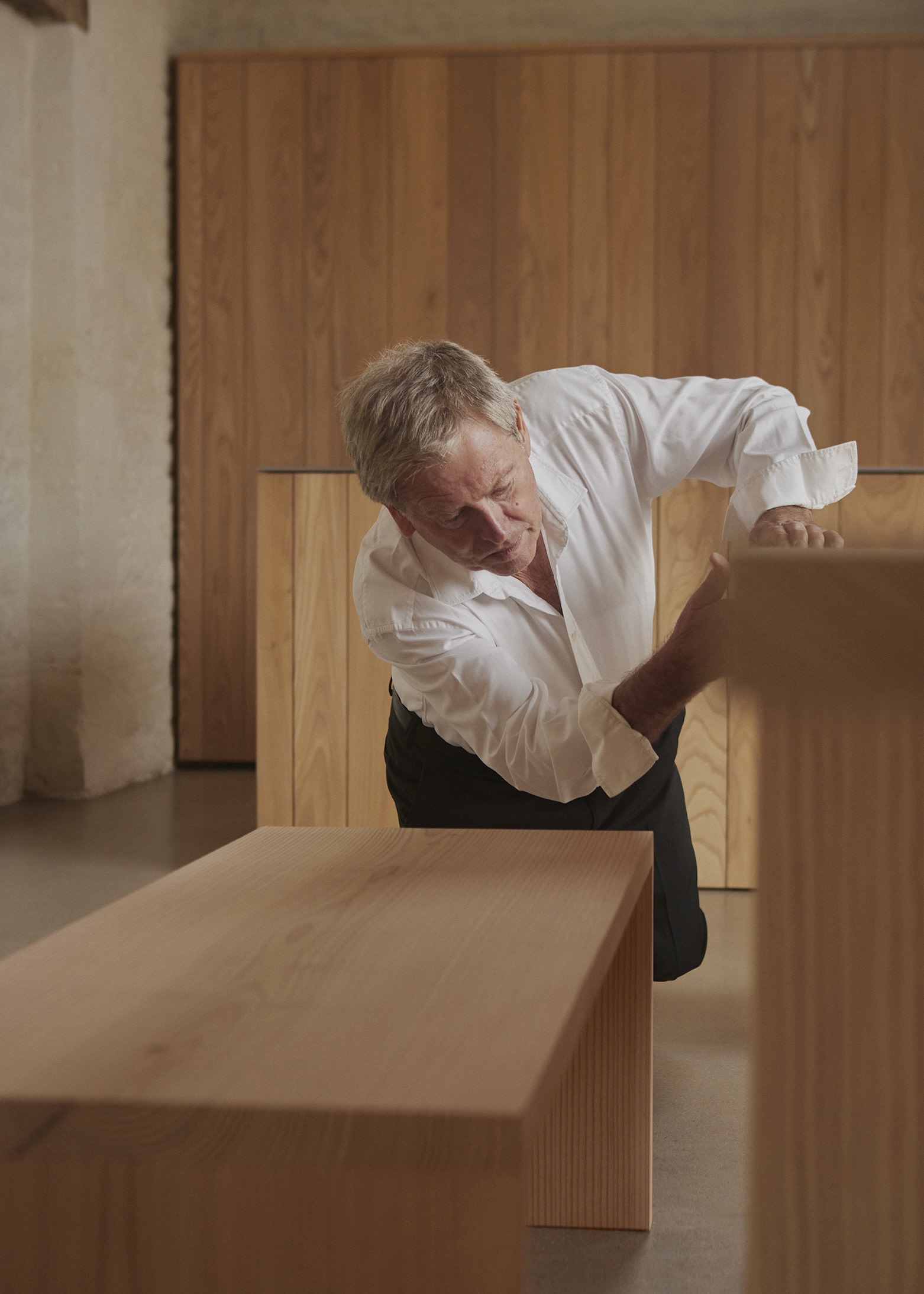


John’s first project using Dinesen Douglas fir was his own home, finished in 1994. Discovering 45 centimetre pieces in 15 m lengths offered a new perspective on wood. At Pawson House, these are used liberally. Immense floorboards run throughout the house, the same material used for three key pieces of furniture. Together these are an emblem of the collaboration between Dinesen and Pawson, the first example of how John took the material beyond its intended form.
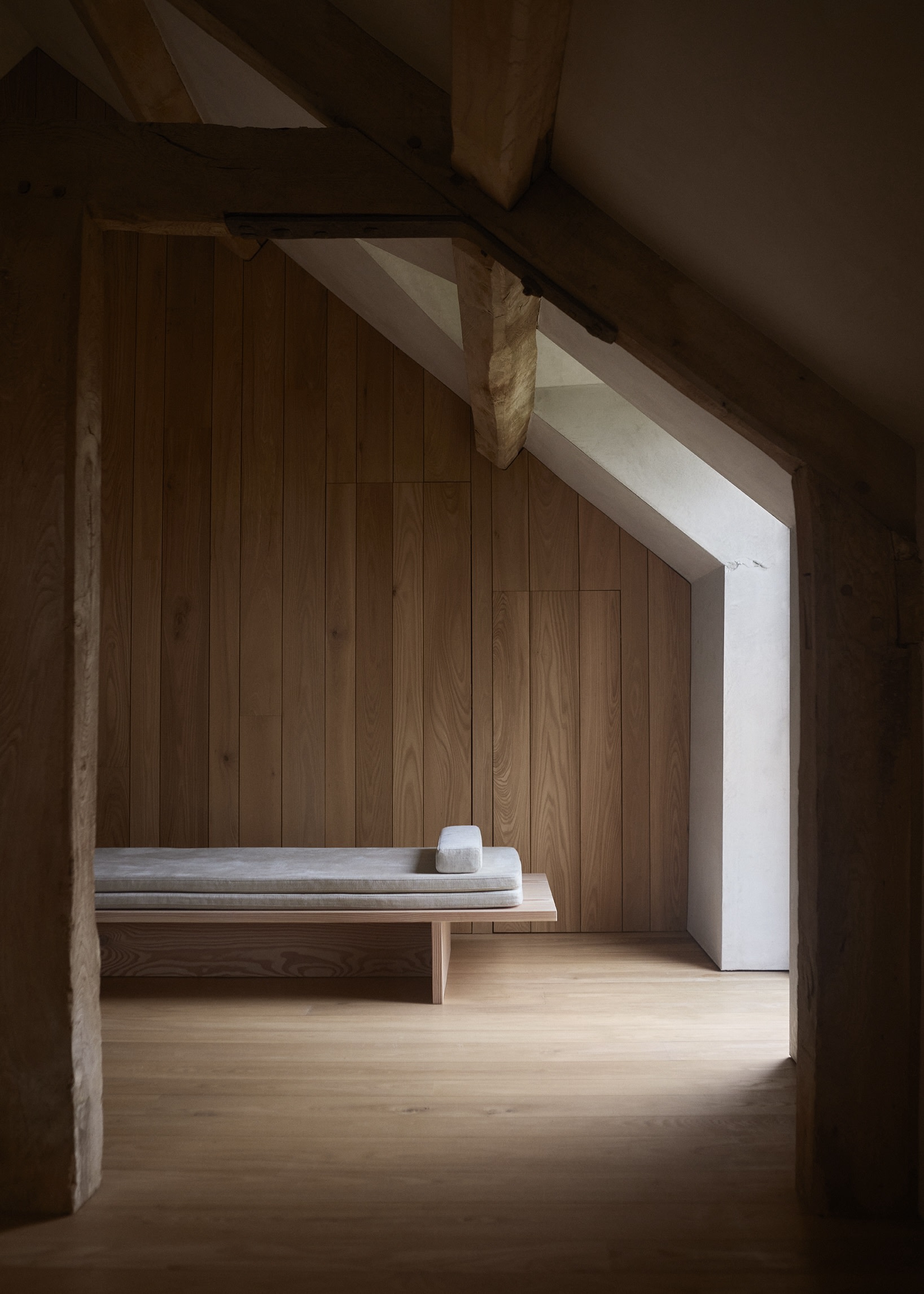
Home Farm
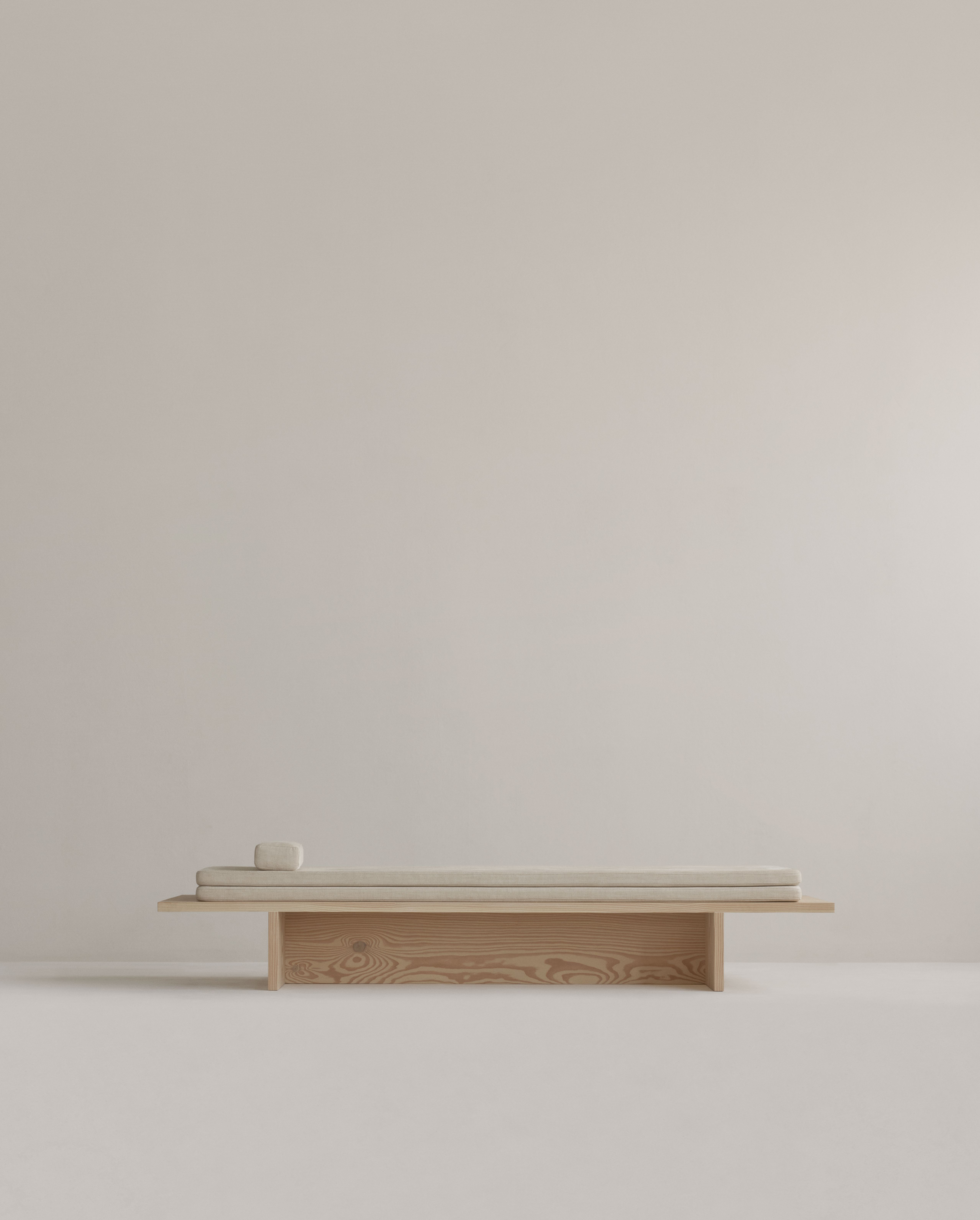
It was interesting to see how you could transform Douglas fir into furniture where you can still see the beautiful grain and the width of the planks. To somehow use it in a way that took it as its most simple form, the planks. I wanted to try something more curved, but I can see that in a way you’re slightly fighting the planks. it is very important to deal with the material you’ve got in a sympathetic way. Not everything can be turned.
- John Pawson
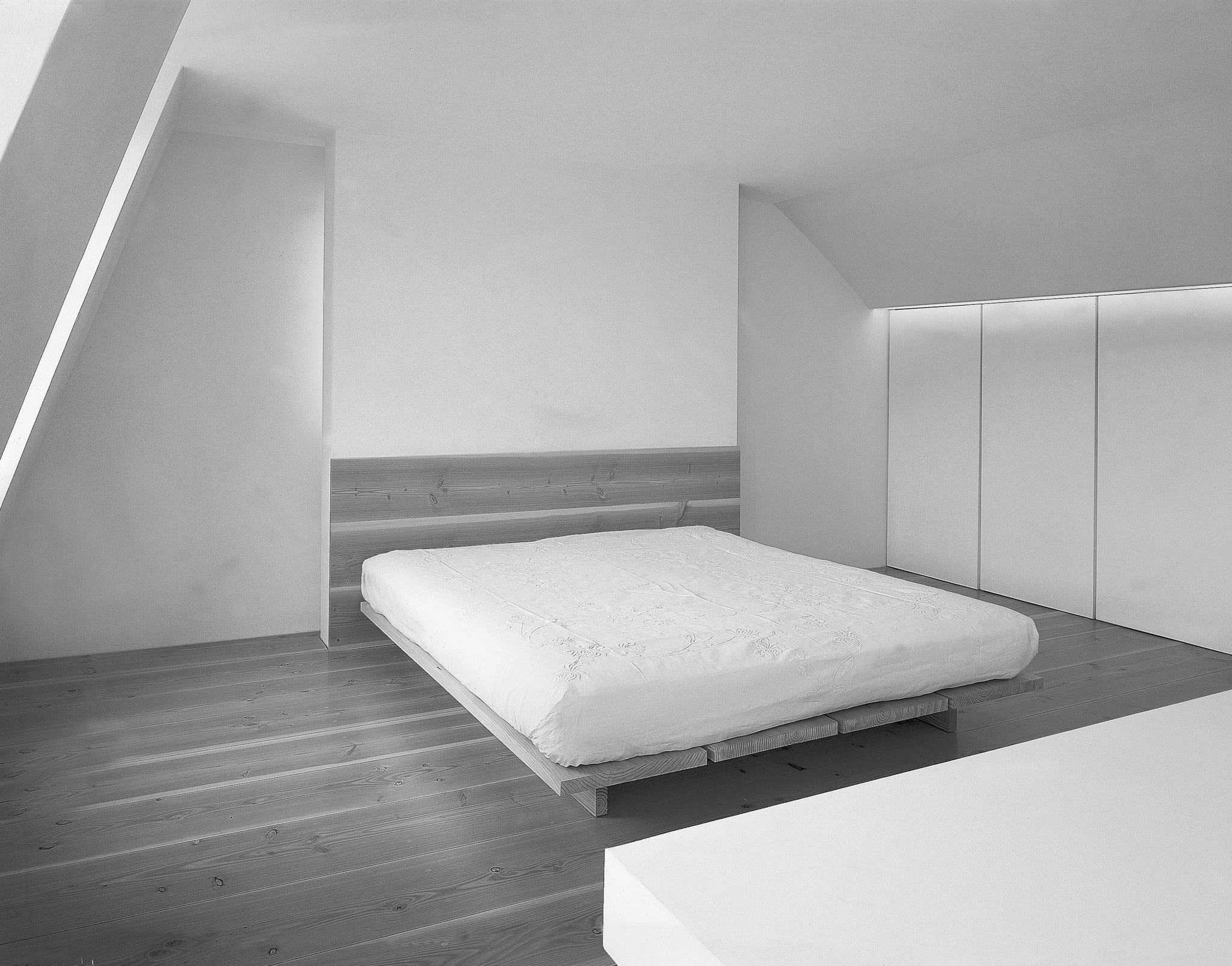
Pawson House
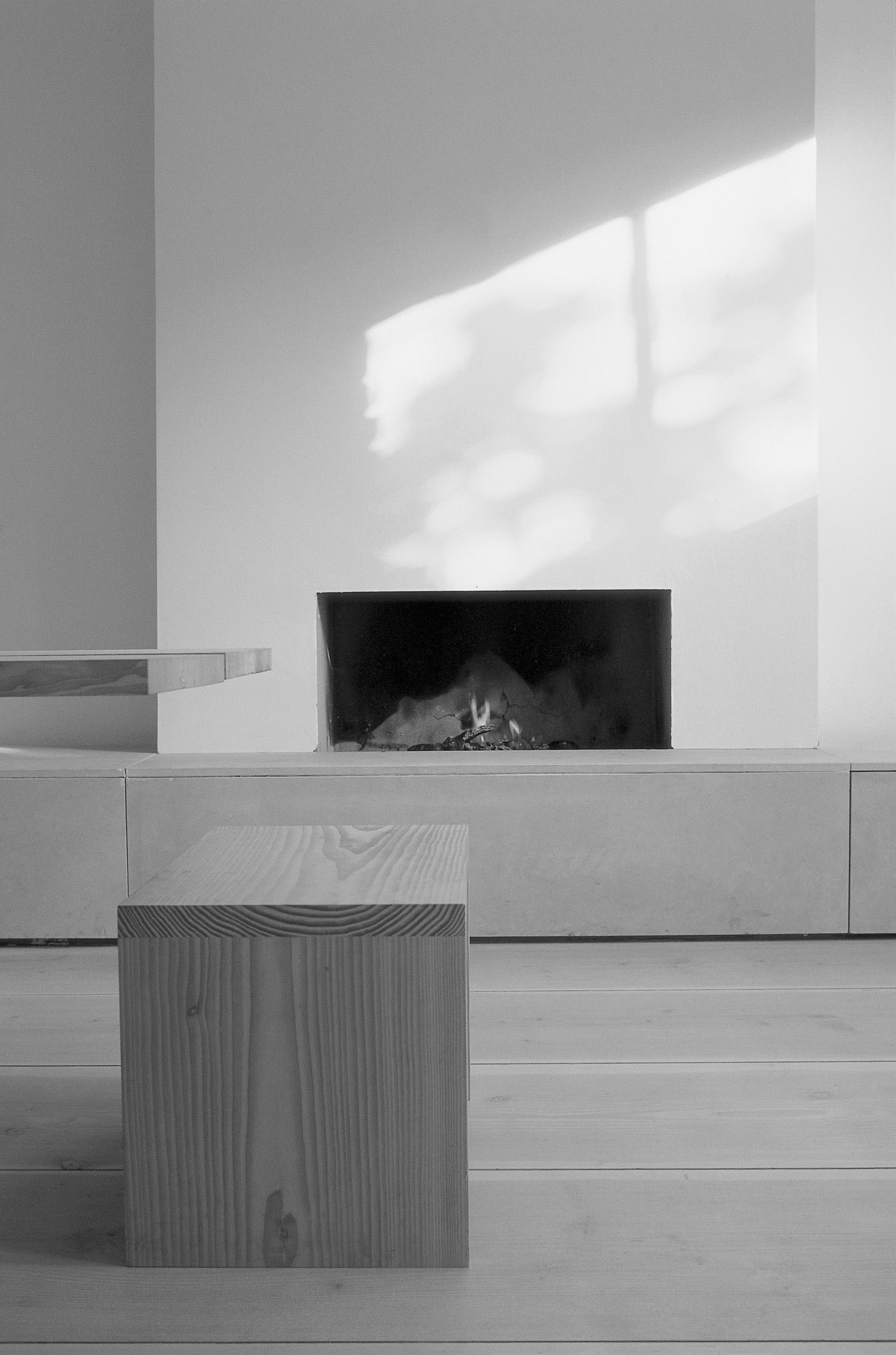
Pawson House
A dining table, bench and stool were created by using the same volume of wood cut and repeated, used horizontally or vertically. Design disappears in favour of a seamless experience. The radical reduction of form and simplicity allows you to imagine more freely how to use the objects, which always feel open-ended, versatile.
Even cheeky. John remembers: “We made a bed for the guest room. The space was four metres wide, so you could not really have a double bed in there. We built a 1 by 4 m long bed so that friends slept foot to foot when they spent the night. It was rather sweet. I’ve got pictures. I never really asked them how it was, but they seemed to have fun.”

Beyond materiality and design, it is always a matter of scale. Here, exaggeration is a sort of insinuation. The sturdy volumes are too heavy to move around, because there is an intentional place for them. They reveal the weight of wood, but invite you to sense how the construction and material supports you. Solid, to be shaped by life for years to come.
Sheer scale makes us see and feel. It enables the distinct quality of materials to come closer, we experience it more intimately. John calls it a quiet sense of stimulation, a principle he has continued to build on, challenge and experiment with throughout his work with Dinesen.
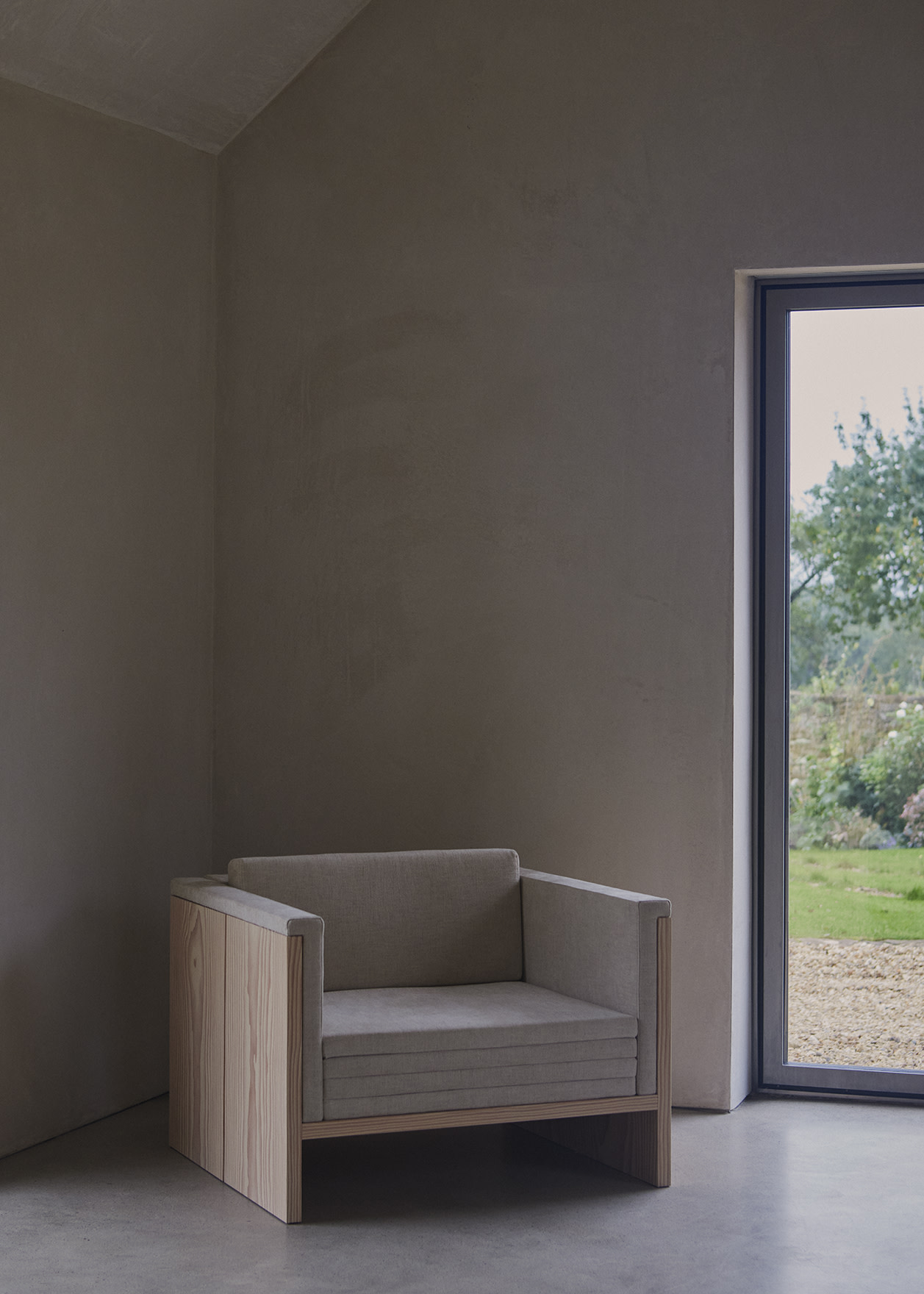
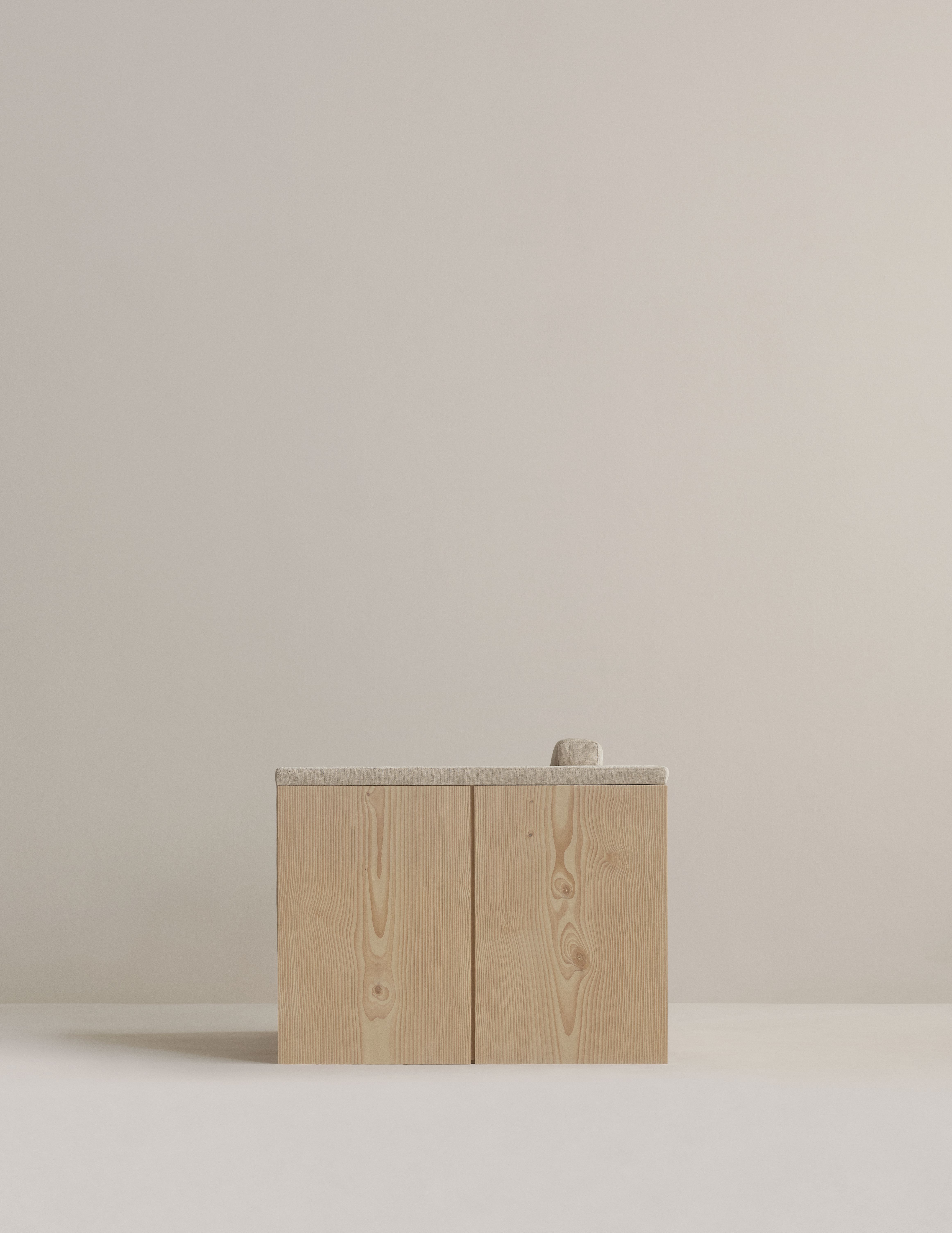
Today, the stool stands in the library of his studio. The lacquer has yellowed into a pleasant honey-tint, while the edges bear witness of the family dog’s teeth. When his children were tiny, they turned them upside-down, transforming the stool into an armchair. An iteration of the table, now an iconic Pawson piece, is found outside the Dinesen Country Home - weathered into a silver grey.
In 2024, Dinesen and Pawson look back and develop on the original furniture collection for Pawson House in 1992 — an embodiment of a vital, on-going collaboration. Each piece reflects the spirit of umage, of dialogue between designer, material and the maker(s) that put their mark on an object, making decisions that form and elevate it along the way.
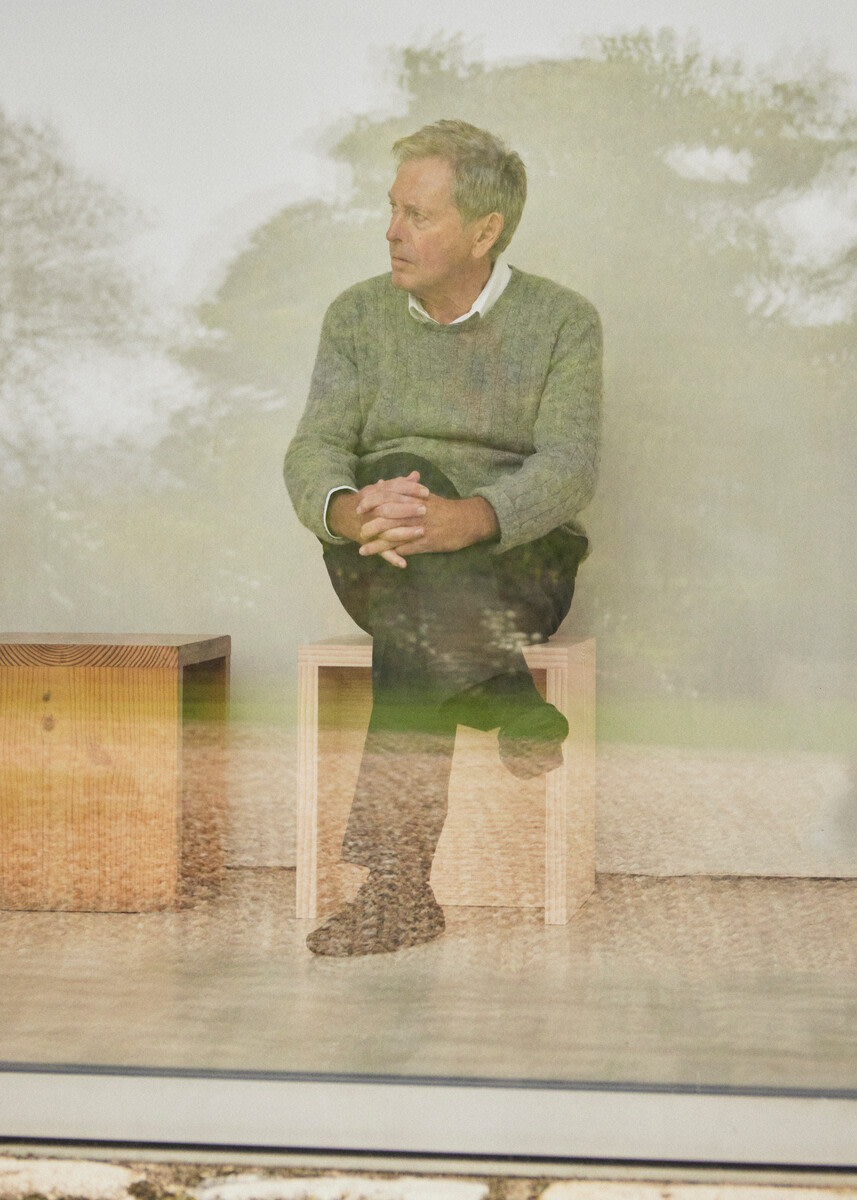
Home Farm
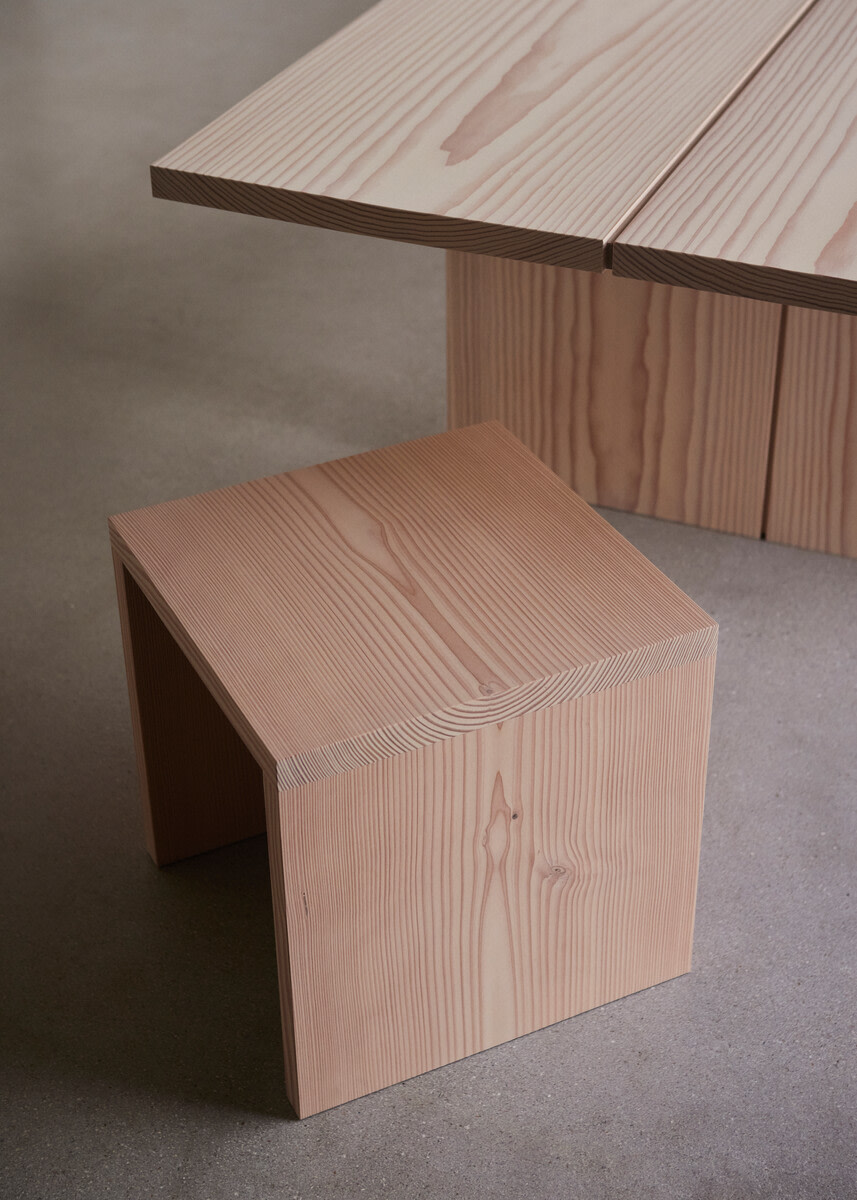
Home Farm
The furniture looks deceptively simple but it is not. It speaks of the contribution from the people involved with making it, the carpenter who made them, the person who chose the boards, how the grain and pattern is considered. That’s a big thing for me. I’m not really a detail-person, I’m interested in detail. I just want to have an idea and somebody else does it better, adds to it.
- John Pawson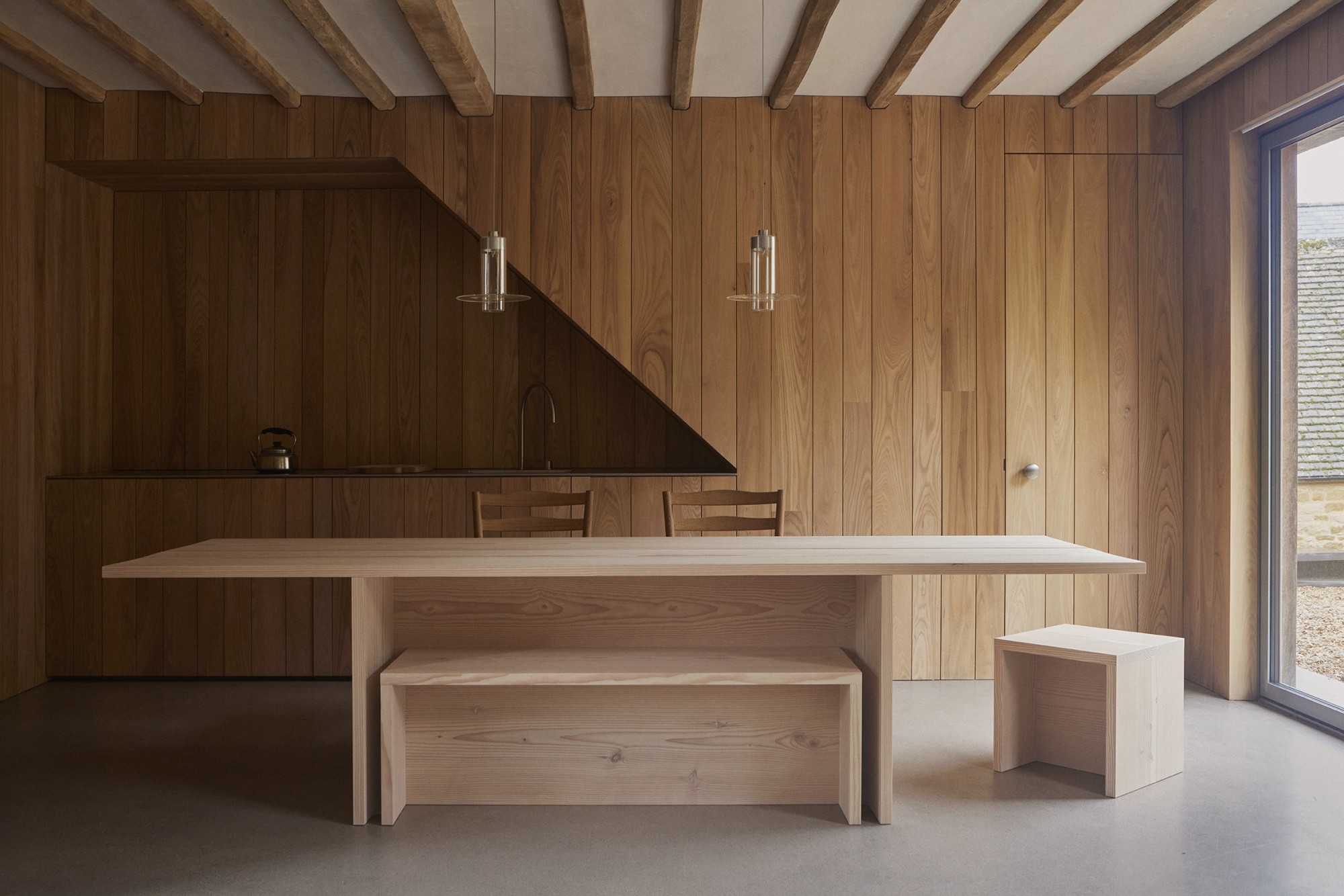
Simple objects, with an immense craft put into them. There is a mutual respect—from forest and trunk to material and object—as a design changes hand, a shared imprint that makes every object unique. The result embodies a shared journey, an intimate exploration of wood as a building block, aesthetic, philosophy, and way of living.
Read more about the Pawson Furniture Collection here.

